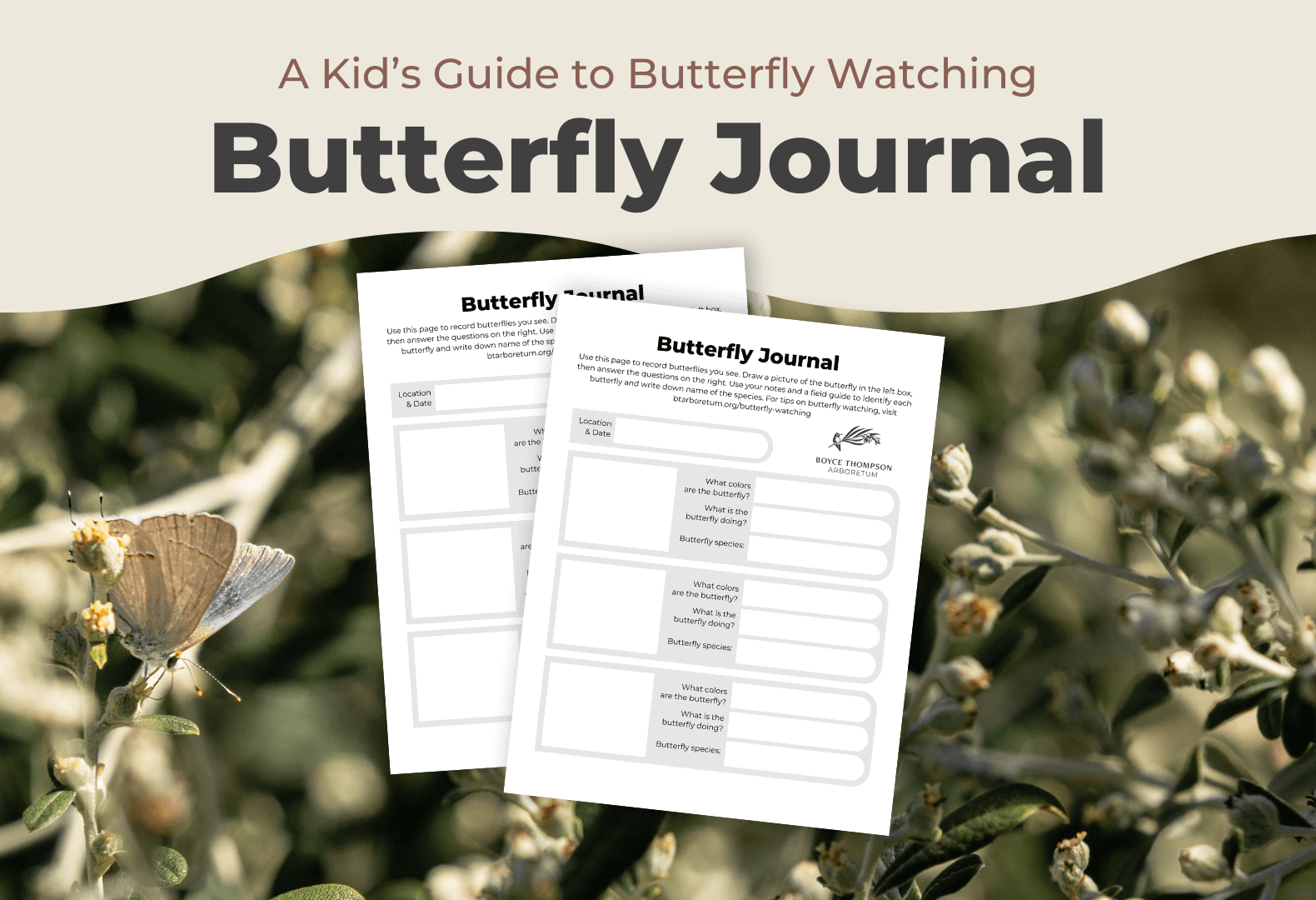A Kid’s Guide to Butterflies at the Arboretum

Why are Butterflies Important?
Butterflies are more than just beautiful creatures fluttering around in the garden – they play a crucial role in our environment. Here’s why butterflies are so important:
Pollination:
Just like bees, butterflies help pollinate plants. As they feed on nectar, butterflies transfer pollen from one flower to another, aiding in the fertilization of plants. This process is essential for the reproduction of many plants, including flowers, fruits, and vegetables.
Food Source:
Butterflies are an important food source for other animals. Birds, bats, and other insects feed on butterflies, helping to maintain the balance of predator-prey relationships in nature.
Ecological Value:
Butterflies are also important for ecological research. Scientists study butterflies to understand their behavior, life cycle, and habitat requirements. This research helps us learn more about the environment and how to protect it.
Butterflies are vital to the health of our environment. By understanding and appreciating their importance, we can take steps to protect butterflies and the habitats they depend on.

Protecting Butterfly Habitats
Protecting the habitats where butterflies live and feed is important for their survival. Butterflies rely on specific plants for nectar and host plants for their caterpillars. You can plant butterfly-friendly plants in your garden to help provide food and shelter for these beautiful insects.
It’s important to choose a variety of plants that bloom at different times of the year. This way, butterflies have food all year round. Some good plants to choose from are butterfly bush, milkweed, lantana, and coneflowers.
Including host plants in your garden is also important. These are the plants that caterpillars eat. Different butterflies like different plants, so it’s a good idea to research which butterflies live in your area. For example, monarch butterflies use milkweed as host plants.
Butterfly Watching
Boyce Thompson Arboretum is a haven for many butterfly species. If you’re looking to explore the world of butterflies, here’s a guide to help you make the most of your butterfly watching experience:
What to Bring:
- Binoculars: Butterflies are tiny and move quickly, so spotting them can be tough. Binoculars help you see them up close without scaring them away. With binoculars, you can more easily observe their patterns, colors, and feeding habits.
- Notebook and Pen: Bringing a notebook and pen allows you to write what you see. This helps you learn more about butterflies and keep a record of your adventures. You can also download the Butterfly Journal below to use instead of a notebook.
- Field Guide: A field guide helps you identify the butterflies you see. It has descriptions, illustrations, and photos of different species. Use it to match the butterflies with their species based on their looks. In addition to a field guide, iNaturalist can help you identify wildlife and plants in your area, including butterflies. You can also use our list of 15 Butterfly Species Found in Arizona to help you identify butterflies, which includes photos and descriptions of each butterfly.
- Sun Protection and Water: Wear sunscreen, a hat, and sunglasses to protect yourself from the sun. Water will help you stay hydrated and energized during your butterfly adventure.



Tips for Observing Butterflies
- Consider joining a Butterfly Walk. During a butterfly walk, a butterfly expert will guide you through the Arboretum to find a variety of our butterfly residents.
- Be quiet and gentle. Butterflies are sensitive to noise and sudden movements. Approach them slowly and quietly to avoid scaring them away.
- Observe closely and patiently. Take your time to watch the butterflies’ behavior. Notice how they feed, fly, and interact with each other.
- Learn about plants. Butterflies are attracted to specific plants for nectar and as host plants for their eggs. Learn about these plants and look for them in the arboretum.
- Respect nature. Avoid touching or disturbing butterflies, their eggs, or their habitats. Remember, you’re a guest in their home.
Tips for Identifying Butterflies

- Look for patterns. Butterflies often have unique patterns on their wings that can help you identify them.
- Check underneath: Some butterflies have striking patterns on the undersides of their wings, so be sure to look from different angles.
- Note colors. Butterflies vary in color. Pay attention to the colors of the butterflies’ wings and bodies. Bright colors can indicate toxicity or mimicry.
- Observe behavior. What is the butterfly doing? Be sure to watch flight patterns. Different butterfly species have distinct flight patterns. Some flutter quickly, while others glide gracefully.
Butterfly watching at Boyce Thompson Arboretum is a fantastic way to connect with nature and learn about these beautiful creatures. Remember to respect the butterflies and their environment.

Discover more learning resources in these blog posts:




